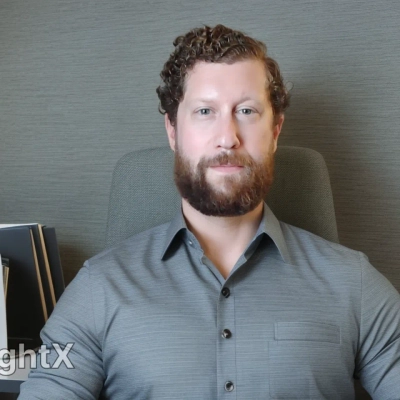5 Ways to Maintain Professional Boundaries While Building Client Rapport in Mental Health
Maintaining professional boundaries while building rapport with clients is a crucial skill in mental health practice. This article explores effective strategies for balancing empathy and structure in therapeutic relationships. Drawing from expert insights, it offers practical approaches to navigate complex interpersonal dynamics while ensuring clear expectations and ethical boundaries.
- Establish Safety Through Structure and Empathy
- Balance Authentic Empathy with Clear Limits
- Frame Coaching as Holding Space Not Fixing
- Set Clear Expectations from the First Session
- Navigate Complex Interpersonal Patterns in Therapy
Establish Safety Through Structure and Empathy
Maintaining professional boundaries while building rapport begins with how safety is established from the first session. For me, trauma recovery work requires warmth and empathy, but it also depends on structure. Clients need to know that I can hold steady when their emotions feel unmanageable. I think that boundaries create the sense of containment that allows deep healing to happen, because without them, the therapeutic space can start to feel unpredictable.
One boundary challenge I faced earlier in my career involved emotional overidentification with clients who shared similar experiences to my own. I wanted to connect deeply, and at times I shared too much in an effort to make them feel understood. Over time, I noticed that it blurred the focus of the session and shifted the emotional weight away from the client's process. I learned that empathy does not require self-disclosure. Instead, it means listening fully, validating their emotions, and reflecting their experience back in a way that helps them feel seen without turning the attention toward me.
Now, I stay intentional about what I bring into the space. I am fully present, but I maintain professional boundaries by letting the client's story remain at the center. In my opinion, this approach models healthy relational dynamics, especially for clients who have experienced betrayal or emotional neglect. They learn that closeness can exist alongside respect and that connection does not mean losing oneself in another person's experience.
For me, the most rewarding part of this balance is seeing clients begin to internalize that same structure in their own relationships. When they realize that care and boundaries can coexist, it often marks a major turning point in their healing process.

Balance Authentic Empathy with Clear Limits
Maintaining professional boundaries while building rapport is one of the most delicate and essential balances in mental health work. My approach centers on authentic empathy with structured limits—being fully present and emotionally attuned to clients while keeping the focus on their therapeutic needs, not my personal emotions or experiences. I strive to create a space where clients feel deeply seen and heard, but also safe within clear, consistent professional boundaries. That means expressing warmth and understanding without over-identifying, and being transparent about the therapeutic frame—session time, purpose, and roles—so that trust is rooted in safety, not emotional dependence.
One boundary challenge I faced early in my career involved a patient who was recovering from severe depression and began to rely heavily on me for emotional validation outside of sessions. She sent frequent messages, asked for personal reassurance, and expressed fear of abandonment if I didn't respond quickly. At first, I felt torn between wanting to support her and knowing that responding outside professional limits could reinforce dependency rather than empowerment. It was uncomfortable—I worried that setting limits might seem cold or rejecting.
After consulting with my supervisor, I realized that boundaries are not barriers; they're containers for safety. I had an open conversation with the patient, acknowledging her feelings while clarifying the therapeutic structure: that communication should remain within sessions, and that we could use session time to work on building other support systems and coping tools. We reframed the boundary not as rejection, but as a chance to strengthen her autonomy. Over time, she began to internalize that stability didn't depend on my availability—it came from her growing resilience.
That experience taught me that maintaining boundaries is an act of compassion, not distance. Clear, consistent limits model healthy relational patterns and reinforce self-efficacy for clients. It also reminded me that genuine rapport doesn't come from overextension—it comes from trust, predictability, and respect for the therapeutic space.

Frame Coaching as Holding Space Not Fixing
One way I maintain professional boundaries while still building rapport is to frame coaching sessions as holding space rather than fixing space. Given the trauma-informed work done in birth trauma coaching, people come in with wounds around being judged, rushed, or unheard. My role is to be a witness first, not a fixer. For me, that shift in mindset helps clients trust that they will not be pushed beyond what feels safe.
Early in my coaching work, I faced a challenge when a client, mourning a complicated birth experience, asked for frequent check-ins outside of session. She was desperate for reassurance and validation. My initial instinct was to respond, to support, to do more. But that began eroding the container we had built. I realized she needed boundaries more than extra messages.
I addressed this by gently explaining how our work would be most effective when contained within session times. I offered alternative tools she could use between sessions: journaling prompts from her coaching packet, brief reflection practices, or a community support circle available through membership. Over time, she grew more comfortable trusting the container. She told me that knowing I would show up for her in session gave her more safety than constant outreach.
One communication technique that strengthens this balance is making meta-statements about the process. For example, I might say, "I'm noticing how important it is for you to feel held between sessions. I want to honor that, yet our time works best when we respect the boundaries we set together. Let's create a resource you can use until we meet again." That kind of statement signals empathy, transparency, and respect all at once.
This approach builds rapport because the client feels understood and safe. And it keeps boundaries in place because they understand why the limits exist, not as a refusal but as part of responsible, caring support. In my opinion, this balance is essential in trauma work. When boundaries and empathy coexist, coaching becomes a space where healing feels possible, consistent, and trustworthy.

Set Clear Expectations from the First Session
Maintaining professional boundaries begins with clarity about roles and expectations. From the first session, I emphasize the structure of therapy, including confidentiality, session limits, and the scope of support I can provide. This helps clients understand that while the environment is warm and empathetic, it is also professional and safe. Boundaries do not hinder connection; they create a framework in which trust can flourish.
A significant challenge I've encountered has been managing situations where clients wish to offer gifts as a token of appreciation. Early in my career, I found it difficult to decline such gestures, as I didn't want to appear ungrateful or risk offending the client. However, I've learned that maintaining professional boundaries is essential, as these situations can easily blur the line between genuine support and personal involvement.
Over time, I learned to recognize these patterns and implement self-checks, including supervision and peer consultation. This allowed me to process my reactions while maintaining a clear professional stance.
I also use consistent communication and transparency. For instance, if a client requests support outside of session times, I provide clear guidelines while validating their needs. This approach reinforces boundaries without making the client feel dismissed or undervalued.
Regular reflection and self-care are critical. By maintaining my own mental well-being, I am better equipped to remain fully present for clients without compromising boundaries. Ultimately, boundaries enhance rapport by creating a predictable, respectful, and trustworthy therapeutic space.

Navigate Complex Interpersonal Patterns in Therapy
The most common and vivid discussions of boundary management in therapy often relate to clients with borderline personality disorder (BPD). With any client, therapists are pulled into their interpersonal patterns. Part of a therapist's role is to be aware of this, explore it, and decide how to act in the most therapeutic manner possible. This could involve engaging in the "enactment," elucidating the pattern to the client, or reacting differently (corrective emotional experience).
With BPD, therapists often feel pulled into two opposing ways of handling situations: either telling the person what to do or avoiding the situation altogether. Neither is likely to be therapeutic. Telling is experienced as invalidation and control, while avoiding is experienced as neglect and abandonment, which triggers the primary wound of BPD: abandonment fears.
I utilize what I call a double-bind statement, pointing out these two polarities and explaining why neither would be helpful to the client in the long run. Then I offer a healthier alternative. For example:
"I feel pulled to either fix this for you, which might communicate that you can't do it yourself while risking feeling controlling, or if I don't give you the solution, you might feel neglected and abandoned. How can I best help you? I want to support you in finding your own solution because I know you can. I'll be with you every step of the way. However, I would be remiss to do it for you."


